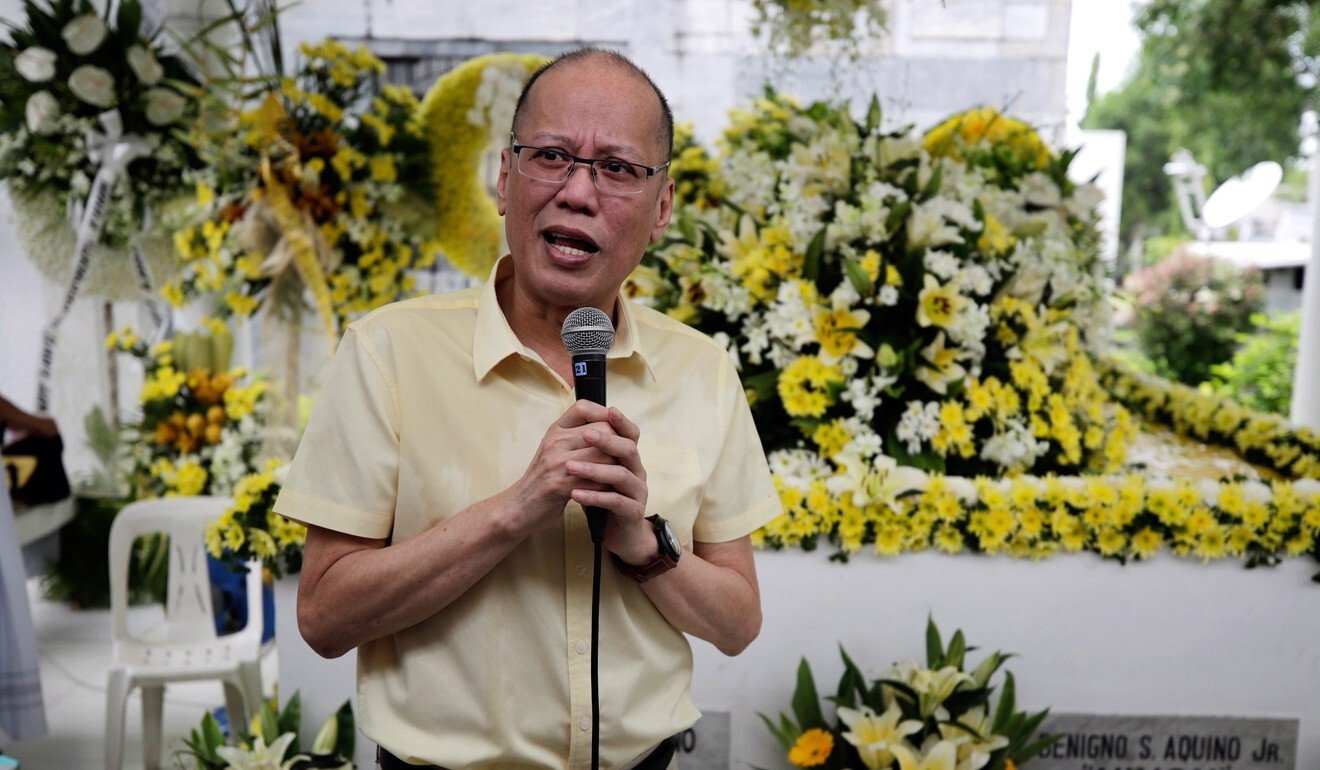
Former Philippine president Benigno Aquino dies aged 61
- The son of two of the Philippines’ democracy icons died at 6.30am of kidney failure as a result of diabetes, his family said
- He oversaw the country’s fastest period of growth since the 1970s and challenged Beijing’s expansive South China Sea claims
Former Philippine president Benigno Aquino, the son of two of the Southeast Asian country’s democracy icons, died on Thursday.
He died “peacefully in his sleep” at 6.30am on Thursday, his family said in a statement. The cause of death was kidney failure as a result of diabetes, it added.

01:14
Former Philippine president Benigno Aquino dies at 61
“It is with profound sadness that I learned this morning of the passing of former president Benigno Aquino,” Supreme Court justice Marvic Leonen, who was appointed by Aquino in 2012, said in a statement. “It was an honour to have served with him. He will be missed.”
“We commiserate and condole with the family and loved ones of former president Benigno Simeon ‘Noynoy’ Aquino III as we extend our condolences on his untimely demise,” presidential spokesman Harry Roque said. “We are grateful to the former president for his contributions and services to the country and we ask our people to offer a prayer for the eternal repose of the former chief executive.”
Known popularly as Noynoy, Aquino rode a wave of public support to the presidency after the 2009 death of his mother, the revered “People Power” leader Corazon Aquino, who was herself president from 1986 until 1992.
His namesake father, a senator who staunchly opposed the rule of strongman Ferdinand Marcos, was assassinated when he returned home from political exile in 1983. The killing shocked the nation and helped propel Marcos out of office in the 1986 People Power revolution and ushered in his mother’s presidency.
How will Benigno Aquino be remembered? 10 events that shaped his presidency
Aquino was born on February 8, 1960, the only son among five children. An economics graduate from the Ateneo de Manila University, he worked in the family sugar business before launching his political career in 1998.

A bachelor with a weakness for cigarettes and computer games who had spent much of his life in the shadow of his parents, Aquino had said he did not aspire to lead the nation.
He served as a congressman and senator. Before his public sector career, he worked as retail supervisor and promotions manager at Nike Inc.’s Philippine unit.
He was a three-term member of the House of Representatives between 1998 and 2007, representing the sugar-growing Tarlac province north of Manila.
He still carried a bullet wound from a 1987 attempted military coup against his mother’s administration, during which he was shot five times and three of his bodyguards were killed.

Under Aquino’s six-year presidential term, the nation’s economy grew an average of 6.2 per cent and twice exceeded 7 per cent, the fastest pace since the 1970s.
His administration pursued tax evaders, narrowed the budget deficit from a record level, and enabled the Philippines to clinch its first investment grade score from a major credit rating company.
After he left office, the Permanent Court of Arbitration in 2016 ruled in favour of the Philippines, saying China’s expansive territorial claims in the South China Sea breached international law – a decision Beijing has rejected.
South China Sea: Philippines should legislate ‘gains’ of arbitral win, group says
His administration was criticised, however, for not spending enough to improve the country’s decrepit infrastructure. Traffic jams that led to hours-long commutes triggered public disenchantment, which his successor Duterte capitalised on during the campaign to succeed him.
Additional reporting by Bloomberg, Agence France-Presse

